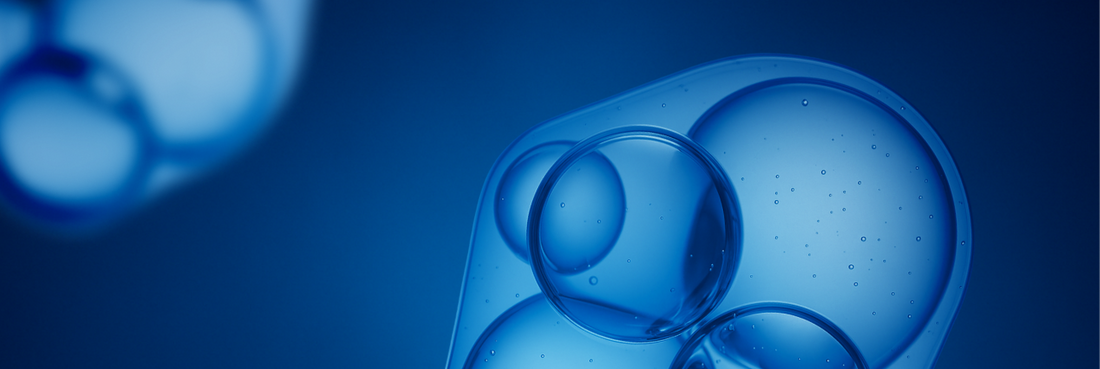
Fall Skincare Reset: How to Support Your Skin Through Seasonal Change
Share
As temperatures drop and humidity decreases, the skin’s natural defenses are often the first to respond. The transition from summer to fall creates new challenges for maintaining hydration, barrier integrity, and overall skin health. These environmental shifts—cooler air, indoor heating, and reduced daylight—affect how the skin functions and what it needs.
Rather than overhauling your entire skincare ritual, fall is a time to recalibrate. By making targeted adjustments that support the skin’s ability to repair and retain moisture, you can help maintain balance, resilience, and long-term health through the season ahead.

What Changes in Fall
Fall weather introduces a combination of environmental stressors that make it harder for your skin to retain moisture and maintain its natural defenses:
- Lower humidity levels reduce the skin’s ability to retain moisture, increasing the risk of dehydration and tightness.
- Indoor heating systems dry out the surrounding air, which can further disrupt the skin’s hydration balance.
- Abrupt temperature shifts—from cold outdoor air to warm indoor environments—can challenge the skin’s barrier function.
- Post-summer UV exposure may leave lasting effects in the form of pigmentation, rough texture, or irritation.
Even if the sun feels less intense, your skin may still be in recovery mode from seasonal stress, making fall an ideal time to reset.
Common Fall Skin Concerns
The environmental changes can trigger visible and textural shifts in your skin. You may notice:
- Tightness or dehydration, especially in areas like the cheeks or forehead
- Dry patches or flakiness around the nose, mouth, or jawline
- Increased sensitivity, with a tendency toward redness or irritation
- Uneven tone or pigmentation from prior sun exposure
- A loss of radiance, as cellular turnover slows and hydration declines

How to Transition Your Ritual for Fall
A full skincare reset isn’t necessary. Instead, small, targeted updates can help your skin adapt to the demands of fall.
Gentle Cleansing
Replace astringent cleansers with non-stripping, barrier-supportive options. Your skin should feel clean, not tight, after cleansing.
Moisture, Layered Smartly
Introduce richer moisturizers or add a hydrating toner or essence under your current cream. Look for ingredients like squalane, ceramides, or hyaluronic acid.
Rethink Exfoliation
Cut back on frequency and intensity. Avoid strong acids that may disrupt your barrier when it’s already under seasonal stress. Instead, try gentler exfoliants used just 1–2x per week.
Targeted Repair Serums
Support skin repair with peptides and antioxidants that work without triggering inflammation. Fall is an ideal time to reintroduce barrier-supportive ingredients like GHK-Cu, Snap-8 (Acetyl Octapeptide-3), or niacinamide.
Keep Sunscreen in Your Ritual
Even with less sun exposure, UVA rays—the ones linked to long-term aging—are still active. Opt for a hydrating SPF to protect without drying.

Ingredient Focus: What Works Best in Fall
During seasonal shifts, your skin responds best to ingredients that support its natural recovery mechanisms. Some of the most beneficial include:
- Peptides: Cell-signaling ingredients like GHK-Cu, Snap-8 (Acetyl Octapeptide-3), and Palmitoyl Peptides help stimulate collagen production, support visible repair, and calm inflammation. These peptides are especially beneficial in fall, when the skin is adjusting to post-summer stress and environmental changes.
- Hyaluronic Acid: A powerful humectant that attracts and retains water in the skin, helping to restore hydration levels as cooler air and indoor heating dry out the skin.
- Ceramides: Essential lipids that strengthen the skin barrier, reduce water loss, and help protect against irritants – especially important when temperature fluctuations strain barrier function.
- Squalane: A lightweight, non-comedogenic emollient that mimics the skin’s natural oils and helps seal in moisture without clogging pores, making it excellent for transitional weather.
- Niacinamide (Vitamin B3): Calms inflammation, evens out tone, and supports barrier integrity – particularly beneficial for skin recovering from UV exposure or irritation.
GLOW’s Role in Your Fall Ritual
As your skin recalibrates in response to fall’s cooler, drier conditions, GLOW offers a steady, science-backed anchor for your ritual. With a carefully selected blend of GHK-Cu, Snap-8 (Acetyl Octapeptide-3), Argireline (Acetyl Hexapeptide-8), and Palmitoyl Peptides, combined with Hyaluronic Acid, GLOW supports both hydration and repair—two pillars of seasonal skin health.
Unlike treatments that overwhelm the skin with aggressive actives, GLOW works with your skin’s natural biology to rebuild collagen, reinforce the barrier, and improve overall texture and tone. Its lightweight texture layers seamlessly under richer moisturizers, making it easy to adjust your ritual without starting over.
Whether you’re dealing with lingering summer stress or preparing for winter’s demands, GLOW’s peptide-powered formula offers consistent support in every season.

Additional Tips for Fall Skin Health
Effective skincare doesn’t end with your ritual—it’s reinforced by the habits that surround it. These small changes can have a big impact:
- Use a humidifier at home to keep moisture levels balanced indoors
- Drink enough water throughout the day – internal hydration matters
- Reassess your exfoliation habits if skin feels tight or inflamed
- Avoid very hot showers, which can dry the skin further
- Don’t skip SPF, even on overcast days
Your skin is constantly adapting. Fall is the perfect time to tune into those shifts and respond with care.
By listening to what your skin needs and choosing formulas that work with its natural rhythm, like GLOW’s science-backed peptide and Hyaluronic Acid blend, you can maintain balance, resilience, and radiance all season long. Effective skincare isn’t about using more, it’s about using what truly works.